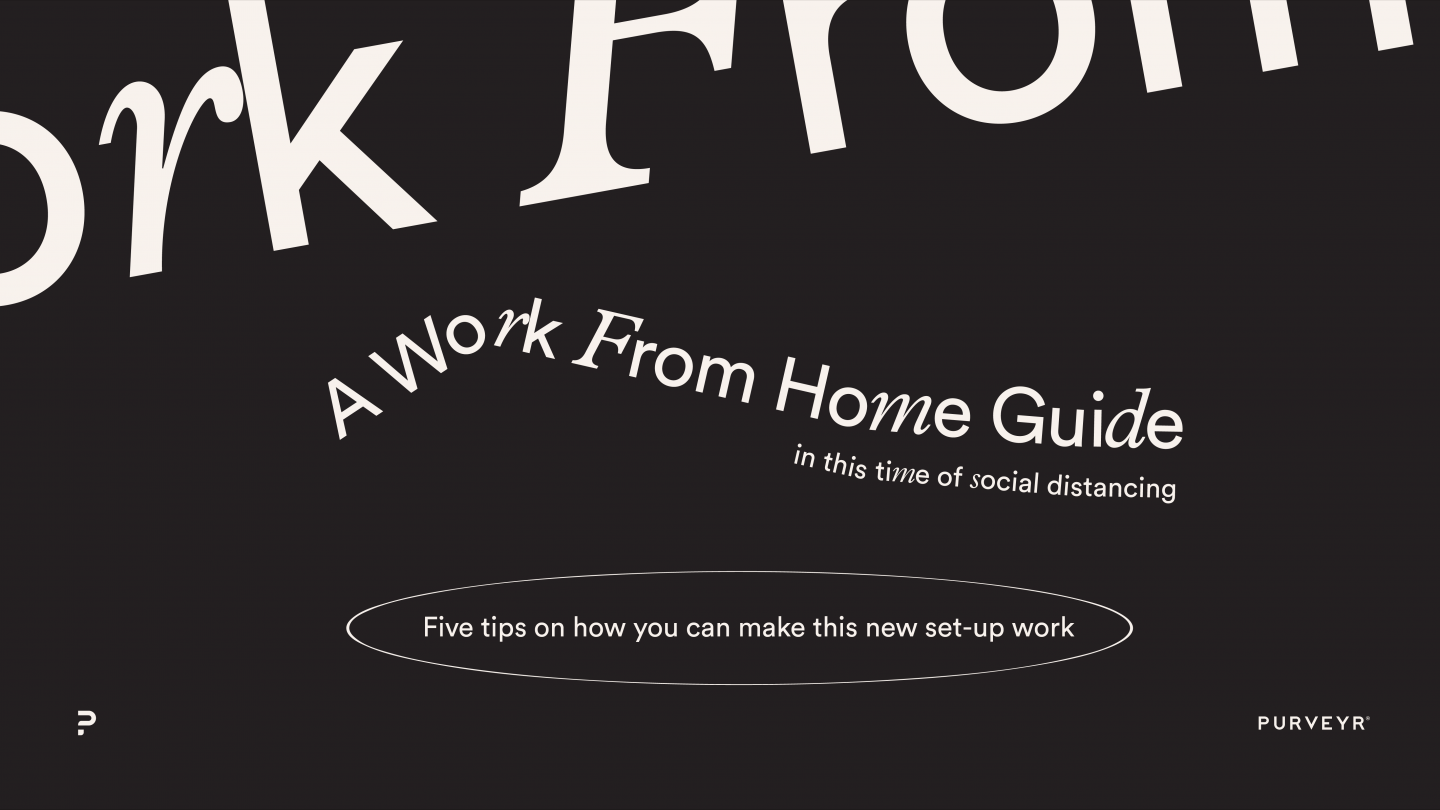
As we find ourselves in an extremely fluid and rapidly-evolving situation given the growth rate of COVID-19, our country and the rest of the world are taking proactive and preventive measures to ensure the safety and well-being of the entire community. With the health of the world being at the forefront and with the World Health Organization declaring a pandemic, heightened sanitation procedures and social distancing are the primary steps to help curb the spread of COVID-19 and to #FlattenTheCurve.
This resulted to more people shifting to work from home situations in order to support the government’s initiative and hopefully, to mitigate the situation and save more lives. The chance to stay at home is a privilege not shared by all; unfortunately, this set up is not for everyone as other daily wage workers or other marginalized sectors have to make ends meet.
If you were lucky to be given this option by your employer, we’re sharing some tricks of the trade that can help you work effectively but at the same time maintain balance, sans the office:
Designs — Edward Joson
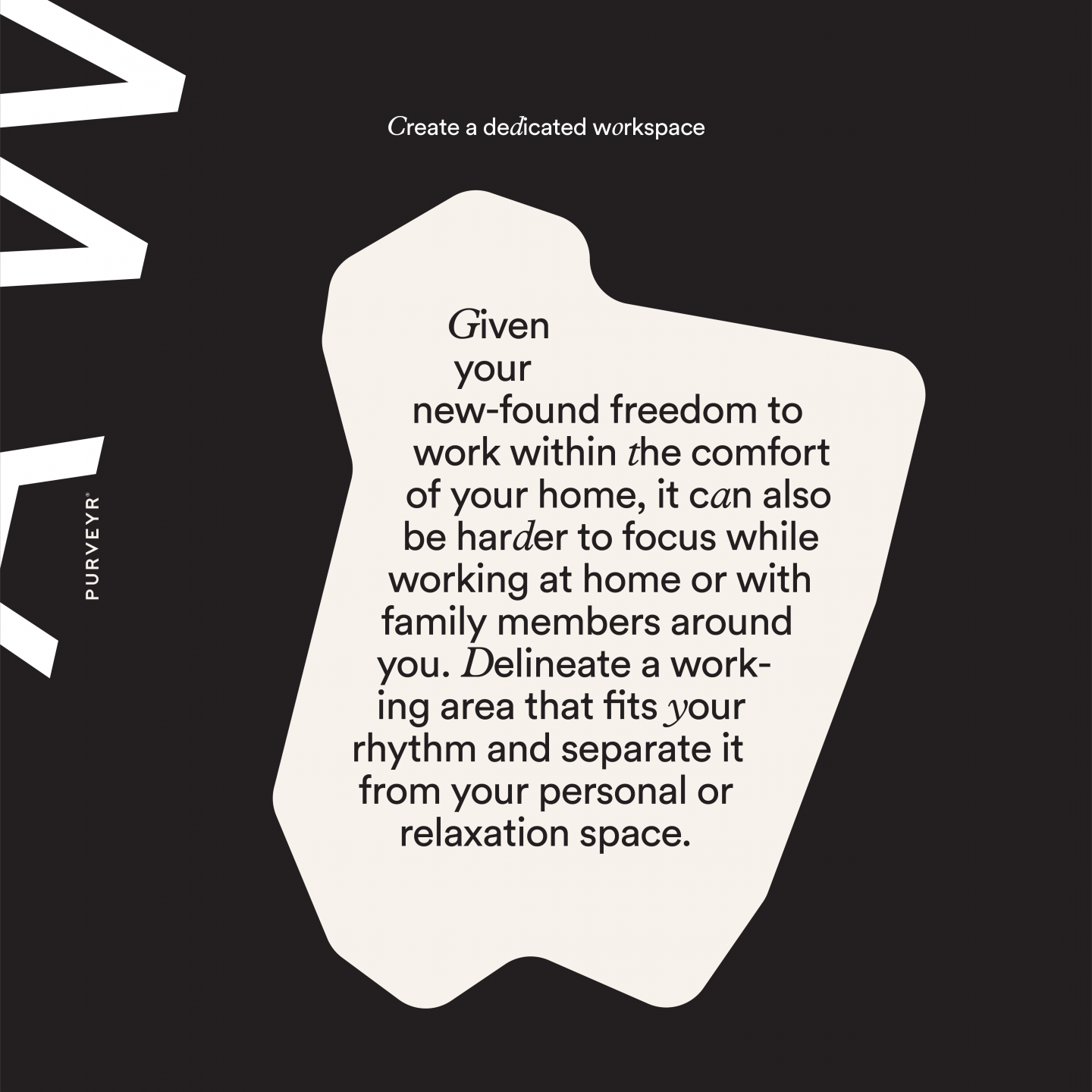
Create a dedicated workspace
Working from home can also be a double-edged sword. It’s not as easy as stepping into your office and churning out a solid eight hours of work. Given your new-found freedom to work within the comfort of your home, it can also be harder to focus while working at home or with family members around you. Mapping out your functional workspace in your home or room is essential. As much as possible, don’t work from your beds! Delineate a working area that fits your rhythm and separate it from your personal or relaxation space. You can even move around as you work to keep it dynamic.
Ideally, your pseudo office can be a separate room wherein you can close the door to signal others that you are on the clock. Don’t forget that it should also be well-ventilated, well-lit and free from clutter and distractions. Prepare everything that you need such as a laptop, a stable internet connection for hosting online meetings, an open line so you’re easily reachable, a bullet list of things to do, and a positive disposition.
Morning routines are crucial
Without the stress of the commute or the extra hours you spend traveling to your office, you now have more personal time to exercise, meditate, commune with your family, and even prepare your healthy breakfast. Shower and get dressed as if you were going to work. You’ll be surprised how it will signal your brain that it’s time to work and not to lounge. Being overly comfy with pajamas on will just tempt you back to bed.
It is helpful to start the day with something that wakes you up in a different way. You will soon realize that this remote work setup is also beneficial for your mental well-being.
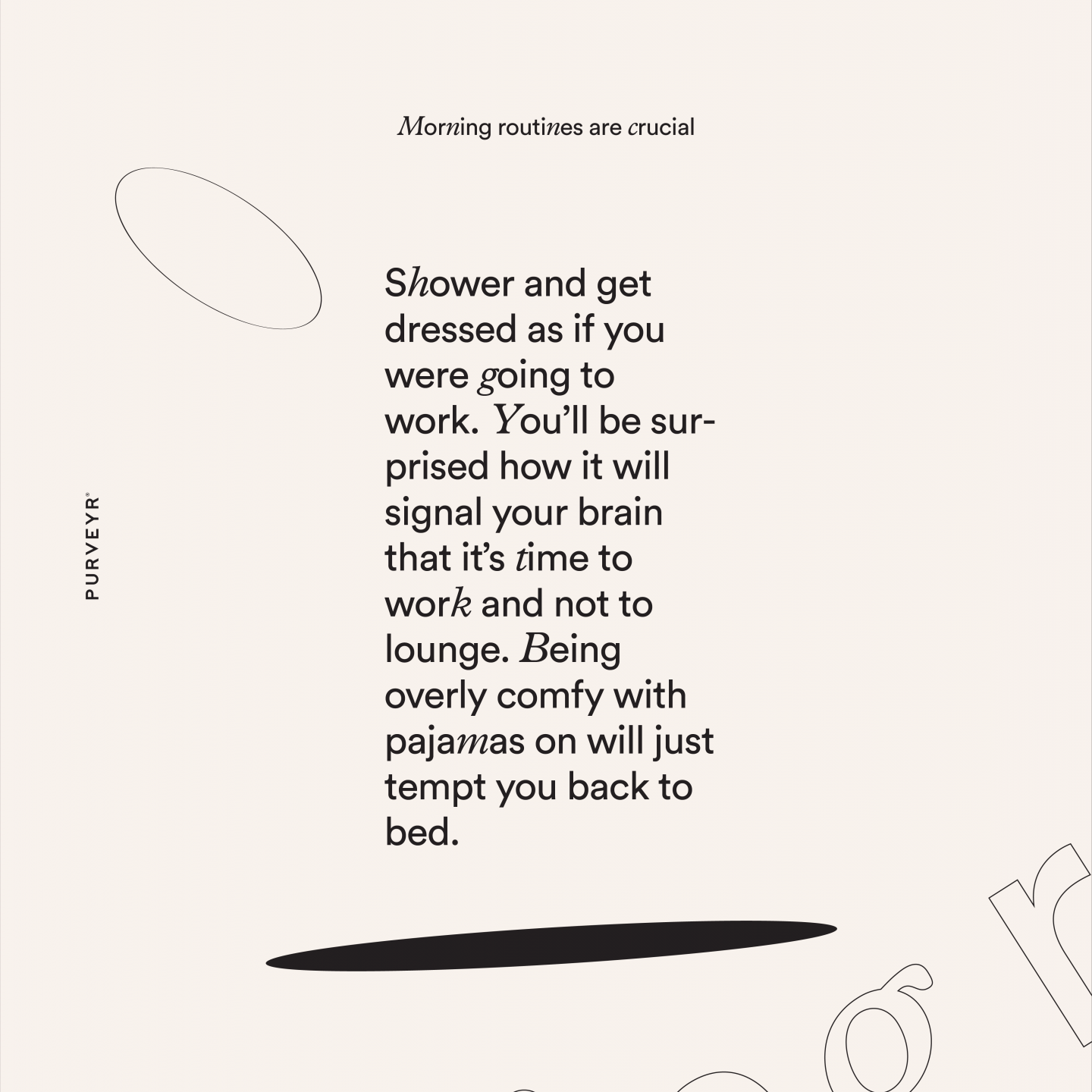
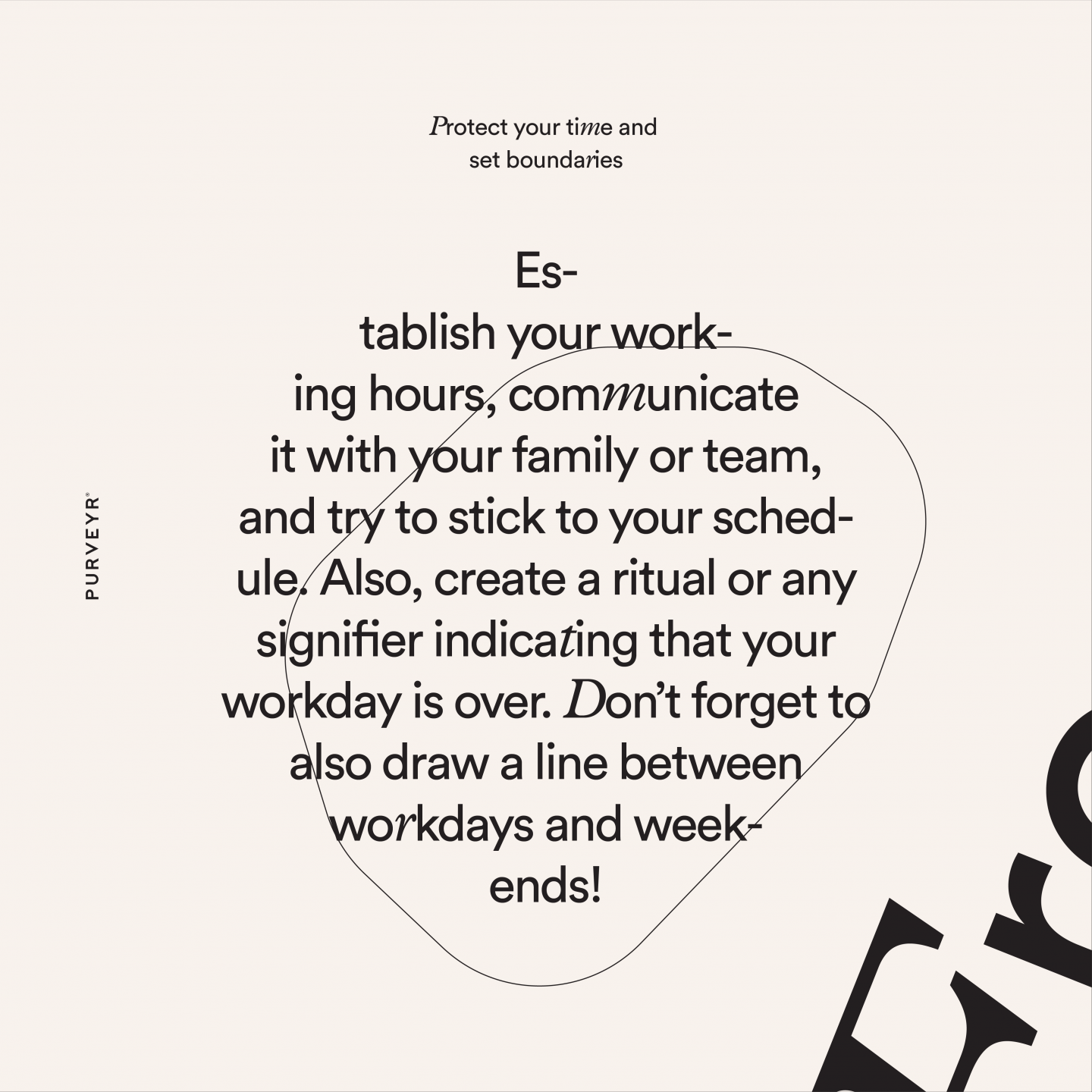
Protect your time and set boundaries
Working from home is a gravitational pull toward sloth-like behavior and you may notice that it can take as much effort to be productive as possible. Establish your working hours, communicate it with your family or team, and try to stick to your schedule. Scribble your priorities on your planner (or Monday or Toggl) first thing in the morning, create time blocks in your calendar wherein you set specific time for specific tasks like checking emails or messages, and stay focused on your output or objectives for the day. Some even surround their desks with things that make them happy or keep their focus like a fresh flower, a polaroid photo or a postcard of their dream destination. Maintaining these habits avoids lax mentality.
We all function differently but best to make sure to keep distractions at bay. It’s easy to get side-tracked nowadays with notifications popping now and then. For some, instilling discipline such as turning off the WiFi when not needed or logging out of your social media account is very effective to have an undisrupted work/creative flow. This has a chastening effect: you’re greeted with a log-in screen instead of clicking right into a vortex of an endless stream of content.
Set boundaries too especially for people you live with. It can be a little challenging if you have children especially now that the classes are canceled for a month. It’s also a hurdle if the people you live with think that working from home also means you’re ready to do housework or you can chat anytime. Politely set rules to help them distinguish home time and work time. Don’t forget to assure them that you’ll spend time together during break or after work hours. Sooner or later, they’ll understand and respect the time and privacy that you need.
It can also be tempting to sneak in some errands or household chores but only do these when you’re off the clock because it can turn into a quicksand activity. Time management is the key, always. Lastly, create a ritual or any signifier indicating that your workday is over. Don’t forget to also draw a line between workdays and weekends!
Take mini-breaks
Now that you have developed a sense of structure for the day, don’t forget to set reminders for your lunch breaks and time outs for sustenance and sanity because it’s easier to lose track of time with this setup.
If you’re feeling unproductive or unfocused, step away from your laptop for a few minutes and go on mini-breaks. As your reprieve, try to brew some coffee, listen to music, put a podcast on, whip up a snack, tell stories to your families, play with your dog or walk outside to recharge (but keep a safe distance from others!). Might as well do a nourishing-dip into some acts of creativity or crafts. These can shake up your perspective, refresh your mind, and boost your focus and productivity.
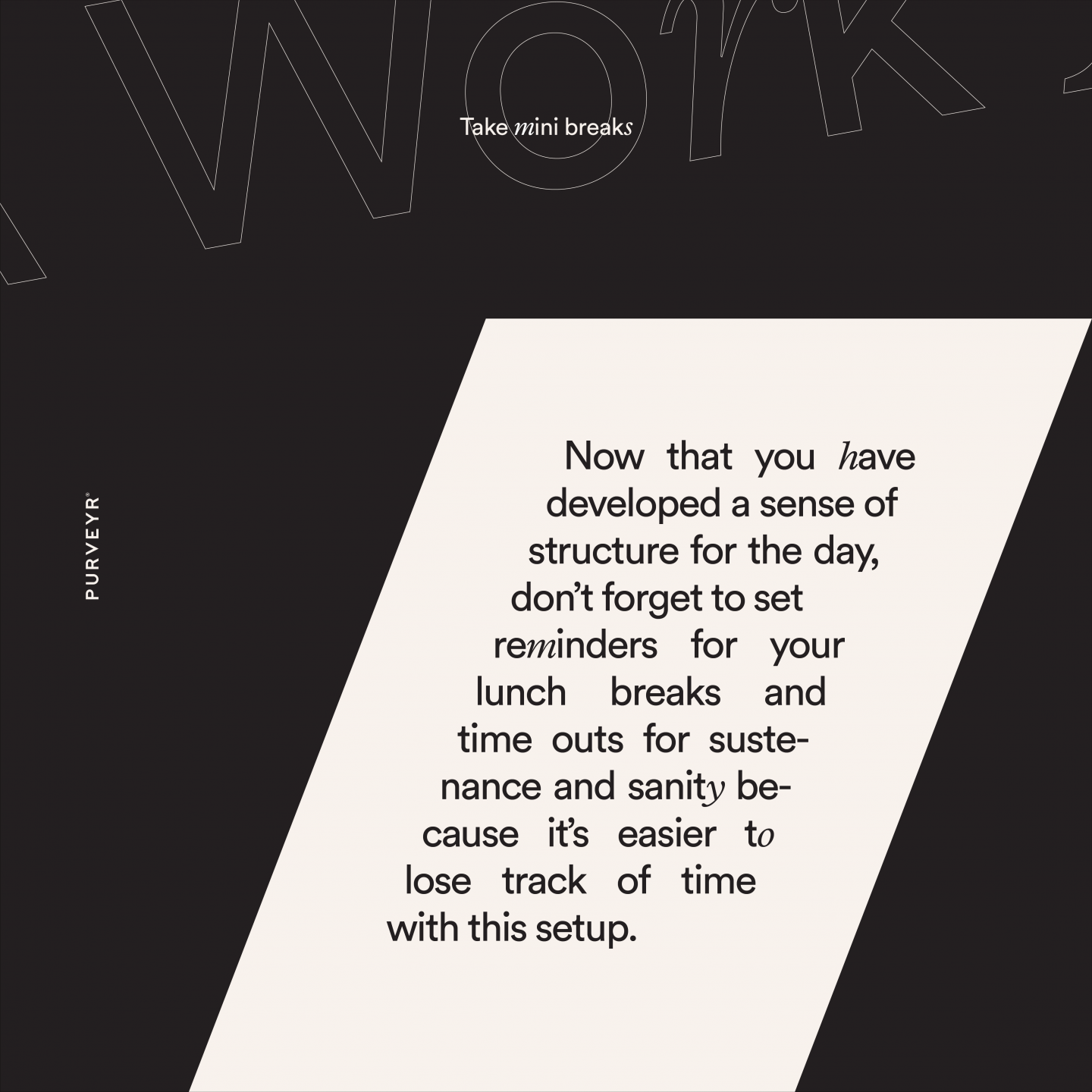
It’s truly daunting when we get overwhelmed with personal and professional responsibilities. Try the Pomodoro Technique by using a timer to break down tasks into intervals. With this strategy, you pick one needle-moving task from your to-do list, work on it in shorter increments of time and take a break after the task has been accomplished. Or you can also reward yourself with snacks as an intrinsic motivation boost or short breaks every hour to help you power through. Know what workflow process works for you and what doesn’t. The more you stay on your lane, the closer you are to your goal.
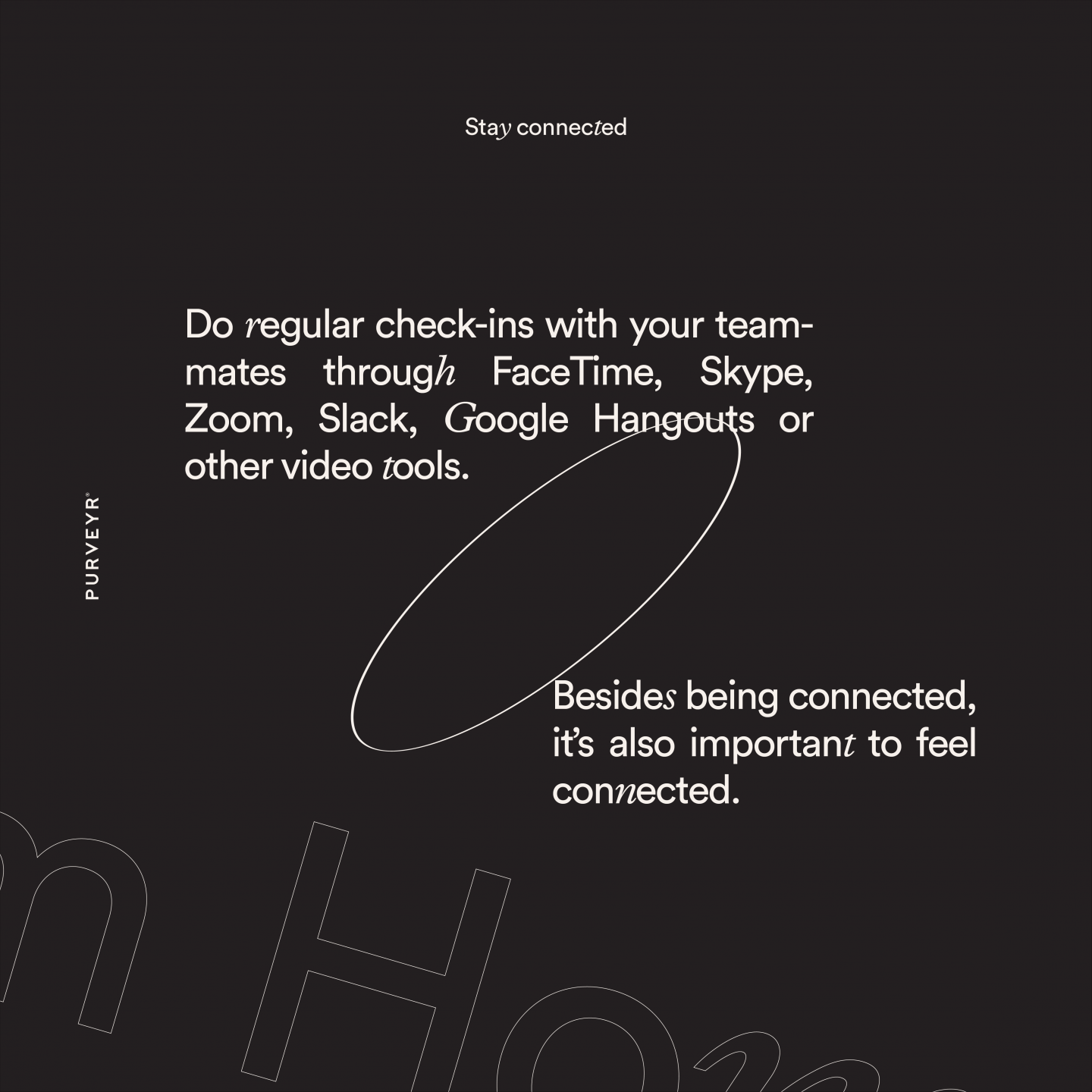
Stay connected
Working from home means no popping into your colleague’s desk and chatting about weekend travel plans. Sometimes this isolation, loneliness, and lack of drive-by connections can also be despairing for some who are used to social interactions, rely on others to buoy their day-to-day rollercoaster life or are energized by being around other people. It can also be difficult for some to manage their team when they can’t walk over to their desks to discuss ideas or problems.
This is where technology is most useful. Do regular check-ins with your teammates through FaceTime, Skype, Zoom, Slack, Google Hangouts or other video tools. Post weekly highlights in your team’s channel or board to keep everyone on the same page. Besides being connected, it’s also important to feel connected. Most companies have a separate channel wherein they just share funny memes, cute dog videos or random musings from their daily lives. Some even host virtual weekly lunches wherein they eat the same food at the same time so they would still have a bonding experience and still feel like a team.
In this time of social distancing, you will surely miss your family and friends as well. It’s also important to have a support structure. Call them, share coffee with them through video call, and keep this time sacred as a social touchpoint for your day.
There are huge responsibilities and accountability with the independence and flexibility when it comes to working from home. By embracing good work ethics such as being self-motivated, highly organized, and reliable and having foresight, strong communication skills, integrity and the ability to focus, you’ll soon be able to master how to work remotely. It is all about discovering the right tools and mindset to stay productive and connected.
The act of working from home also unlocks new ways of seeing — and being — and allows us to inhibit new skills, work on personal pursuits, learn to be still, reconnect with ourselves and our families and even begin to think differently. Learn to make the most out of this new work environment, this might be the elusive work-life balance you were seeking after all.




